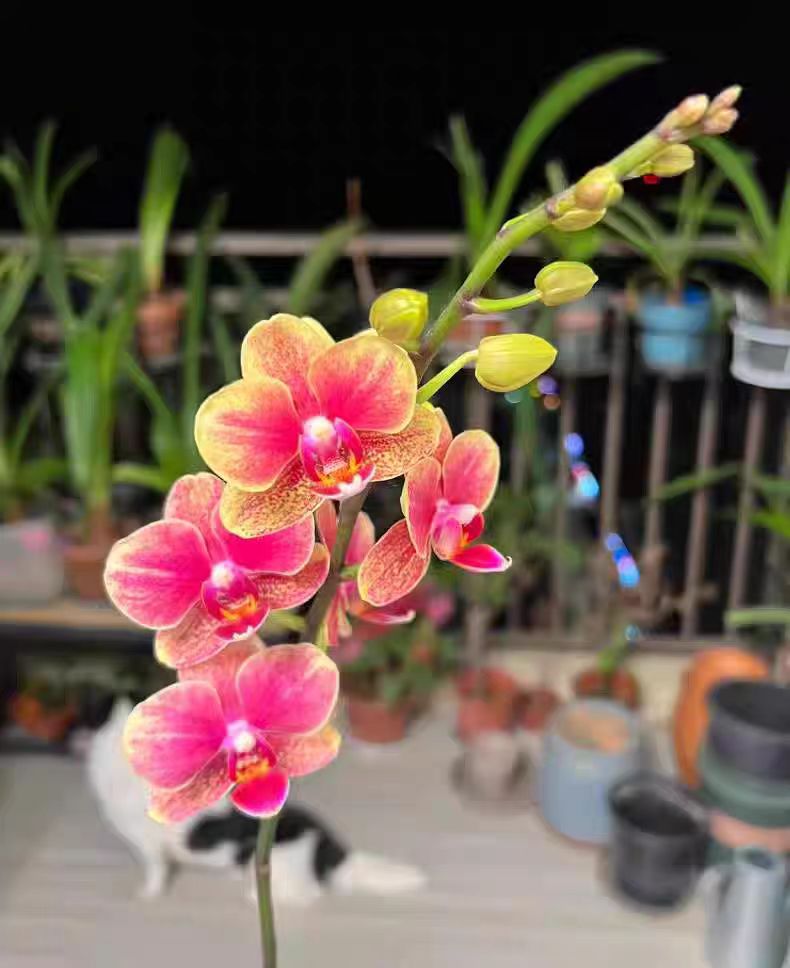Phalaenopsis, a much - loved ornamental flower, can be propagated by division to turn one pot into several, prolonging its elegance and beauty. However, whether pruning is necessary after division and what the subsequent precautions are have become the focus of attention for many flower lovers. Mastering the correct handling methods can greatly improve the survival rate and growth quality of Phalaenopsis after division.
Pruning is an important and necessary task after dividing Phalaenopsis. During the division process, the roots of the plant will inevitably be damaged, and some roots may be broken or damaged. These damaged roots are not only unable to absorb water and nutrients normally, but also easily become a breakthrough for pathogenic bacteria to invade, leading to problems such as root rot.
Therefore, it is necessary to promptly prune off these severely injured, blackened or withered roots. When pruning, use a sharp and disinfected pair of scissors to ensure a smooth cut and reduce the risk of infection.
In addition to the roots, the leaves of Phalaenopsis after division also need appropriate pruning. If there are yellowing leaves, leaves with diseases or pests, or overly dense leaves, they should also be cut off. Yellowing and diseased leaves have lost their normal physiological functions and will also consume the plant's nutrients. Overly dense leaves will affect ventilation and light, which is not conducive to the plant's recovery and growth. Pruning the leaves can concentrate the nutrient supply and promote the germination of new roots and buds.
Precautions after dividing Phalaenopsis:
Wound treatment: After pruning, the wounds must be treated. Disinfectant substances such as carbendazim and plant ash can be applied to the wounds to avoid infection by pathogenic bacteria. If not treated in a timely manner, in a warm and humid environment, the wounds are very likely to breed bacteria and fungi, leading to the plant getting sick or even dying. Place the Phalaenopsis with treated wounds in a well - ventilated and shaded place to let the wounds dry naturally. Generally, place it for 1 - 2 days until the wound surface is dry and scabbed before planting.
Selection of planting substrate: Phalaenopsis is an epiphytic plant and has special requirements for the planting substrate. When planting after division, ordinary soil cannot be used. Substrates with good air permeability and water permeability, such as sphagnum moss, bark, and coconut husk, should be selected. These substrates can provide sufficient air for the roots of Phalaenopsis and avoid waterlogging, which may lead to root rot. Before planting, the substrate needs to be soaked and disinfected in advance to reduce the number of germs and eggs.
Environmental control: Phalaenopsis after division is relatively fragile and sensitive to environmental changes. The newly planted Phalaenopsis should be placed in a semi - shaded environment to avoid direct sunlight, and an appropriate amount of scattered light is sufficient. Excessive light will accelerate the water evaporation of the plant and affect its recovery. The temperature should be kept between 18℃ and 28℃. Too high or too low a temperature will inhibit the growth of the plant. At the same time, the air in the environment should be kept circulating. Good ventilation can reduce humidity and reduce the occurrence of diseases and pests.
Water and fertilizer management: The roots of Phalaenopsis after division have not yet fully recovered their absorption function, so watering should not be excessive. Water thoroughly for the first time after planting, and then water a small amount after the substrate surface is dry to keep the substrate slightly moist. Fertilization should be carried out with caution at this time. Avoid applying concentrated and raw fertilizers. About 2 - 3 weeks after division, when the plant begins to recover growth, apply a thin liquid fertilizer, following the principle of "applying thin fertilizers frequently" to provide nutrients for the plant.
The pruning and maintenance work after dividing Phalaenopsis are interrelated, and each link is related to the healthy growth of the plant after division. Only by doing a good job in pruning, wound treatment, selecting the right substrate, controlling the environment well, and managing water and fertilizer reasonably can the divided Phalaenopsis successfully pass through the seedling - slowing stage and thrive.
Should Phalaenopsis be pruned after division?

Share with
Tagged in :




Leave a Reply